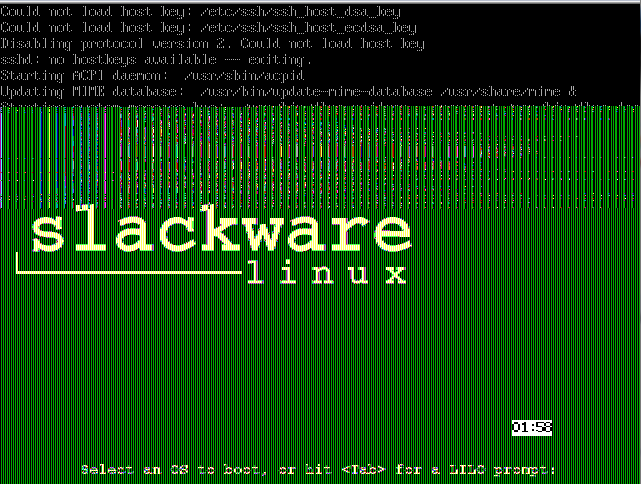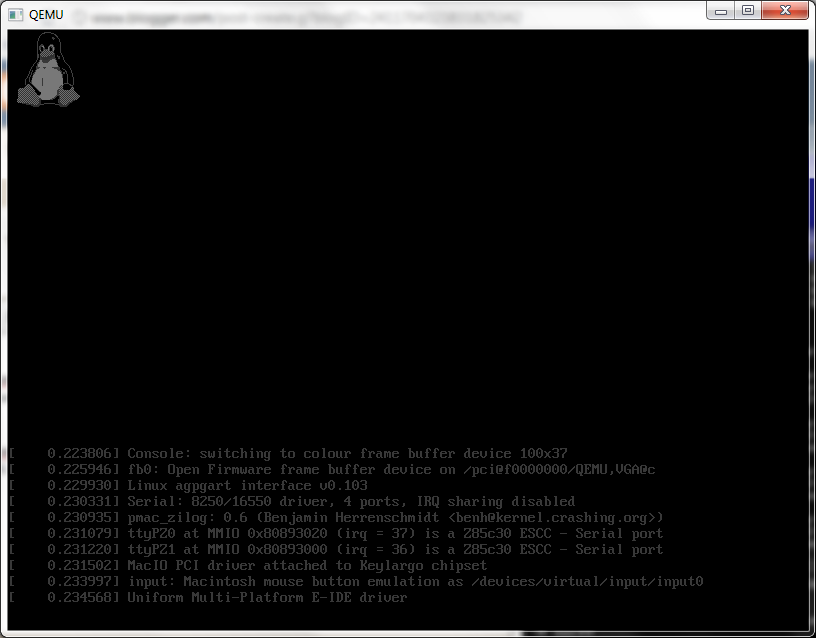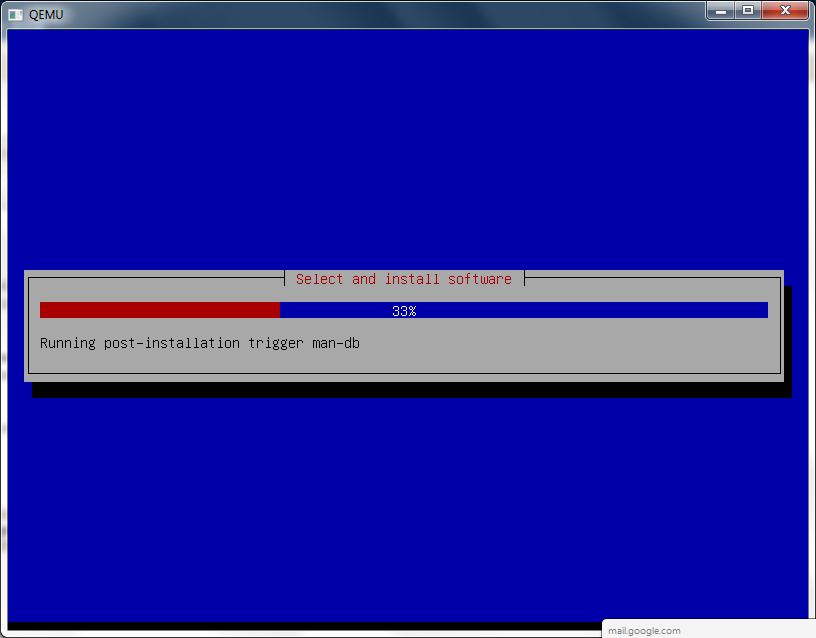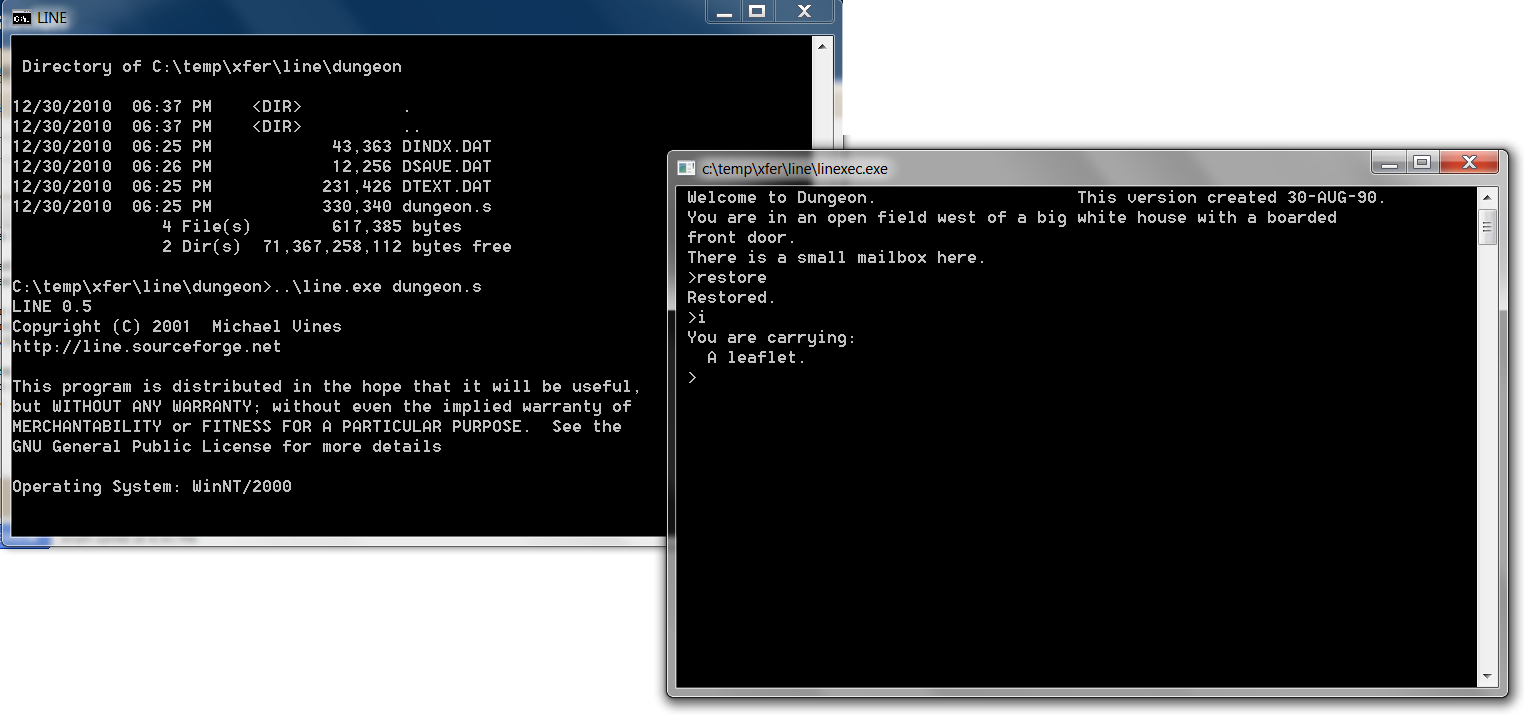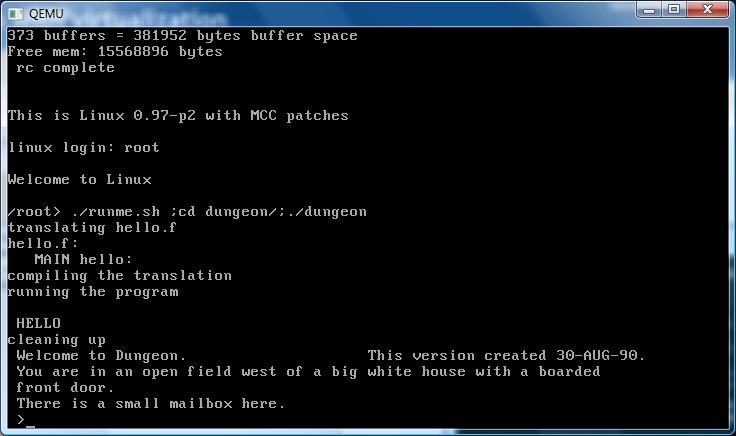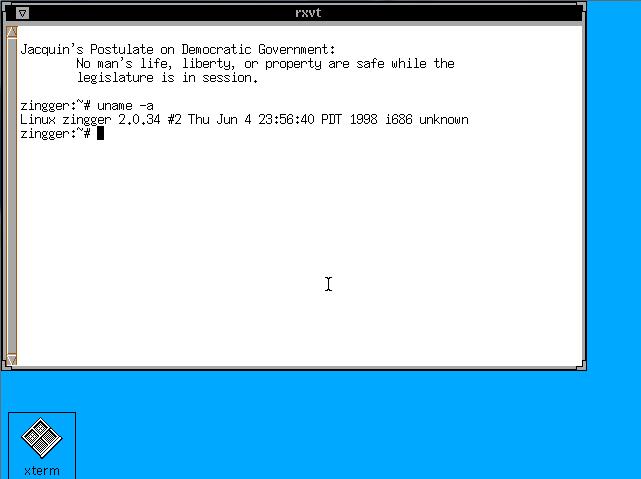While checking out oldlinux.org, I came across two things that are somewhat exciting.
The first, is Linux 0.00 The first ever known version of Linux. It’s only two assembly files, an 8086 booter, and the 80386 kernel that sets up protected mode, and two hard coded tasks, then runs the two tasks. It’s very exciting. There is even some commented source available on the oldlinux forum here.
For those who want to check it out, I’ve padded it out onto a diskette image on sourceforge here.
Don’t expect too much, it just prints “AAAA” and “BBBB” over and over, but it’s the first booting version of Linux.
The next thing I found was a BOCHS archive with Linux 0.11 installed, along with GCC 1.40 and a few other programs. This image can even build Linux 0.00 and a slightly modified version of 0.11 that can run bash. I’ve found BOCHS somewhat difficult to configure, and since Qemu is faster, I’ve converted the disk image into a ‘qcow2’, then got it running on Qemu 0.12.5. Just unzip the archive here, and you can be running some really ancient Linux.
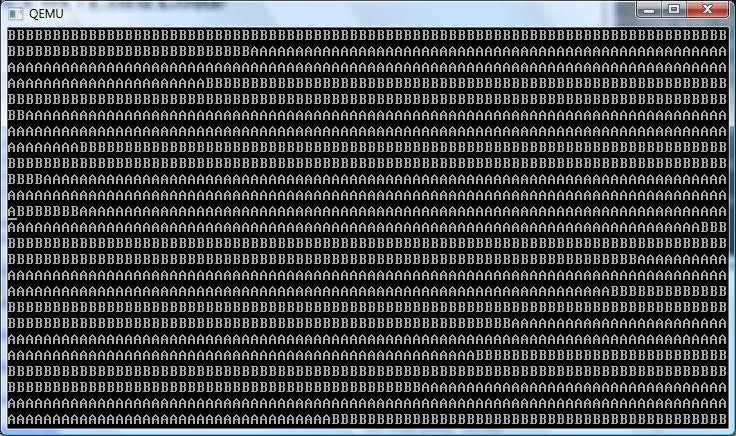
Linux 0.00 in action.
Remember that Linux 0.11 is OLD. At this point it didn’t support multiple users, nor did it even have a shutdown or reboot command. Instead we all ran ‘sync’ a dozen times, then pulled the plug. Also it was VERY unstable, and quite prone to panics and crashes.. Although I think a majority of them back then were due to file system corruption from pulling the plug at the wrong time… 🙂
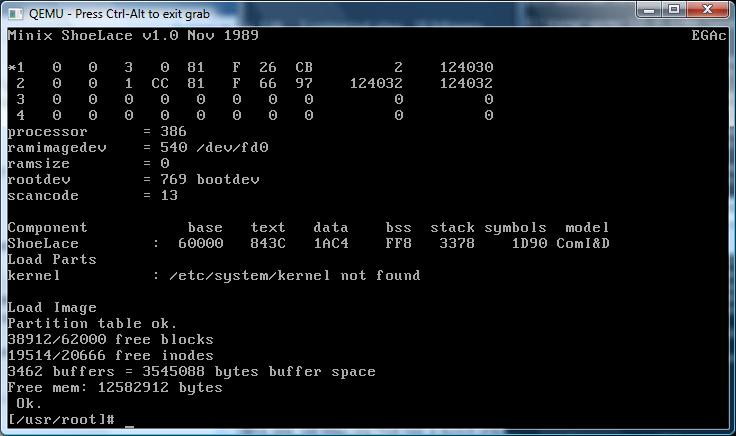
Linux 0.11 on Qemu 0.12.5
Linux also had no support for things like TCP/IP, UUCP, shared libraries, etc… although I’m pretty sure it had working serial port support.. In many ways it feels like 32v, although more primitive. This disk image also has the ability to re-build the patched kernel, and even Linux-0.00. What is also cool is the ‘shoelace’ loader which can boot the Linux kernel, so you don’t have to suffer the boot/root disks of the time, and the fun of hex editing stuff.
For people that love ancient stuff from 1991 this will be great fun indeed!
***UPDATE
For people who are interested in ancient Linux on Windows, I did get the toolchain to build with MinGW, and it seems to work ok! Â I have a post about it here. Â I have also been able to get the 32bit portion of the Linux kernel to cross compile on Windows as well! Â That adventure is here.

